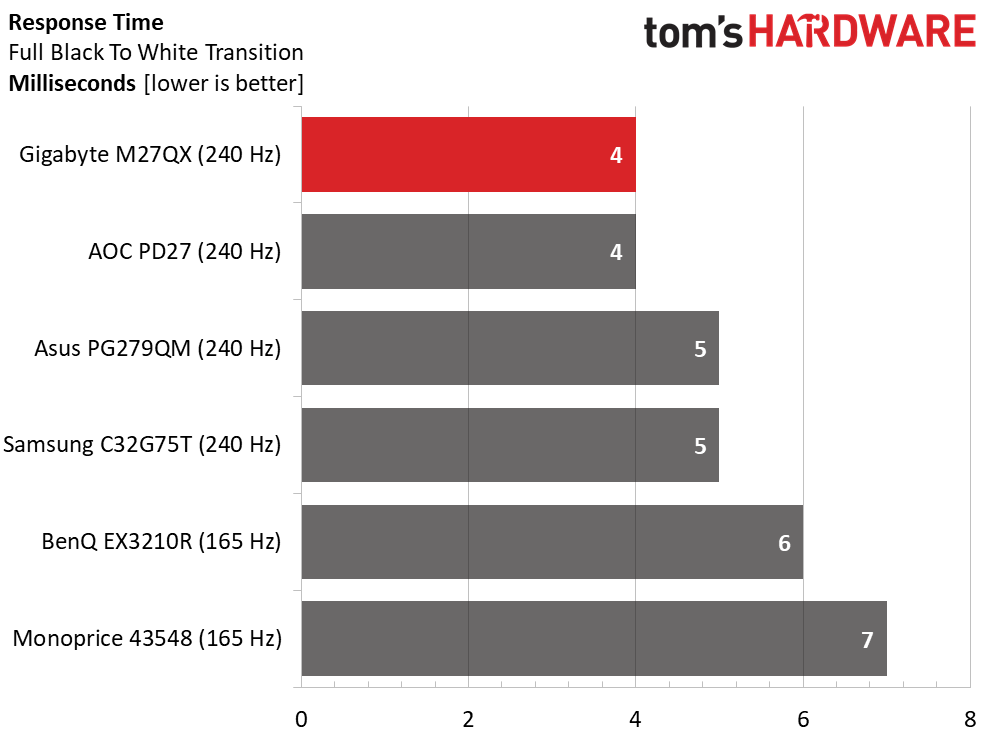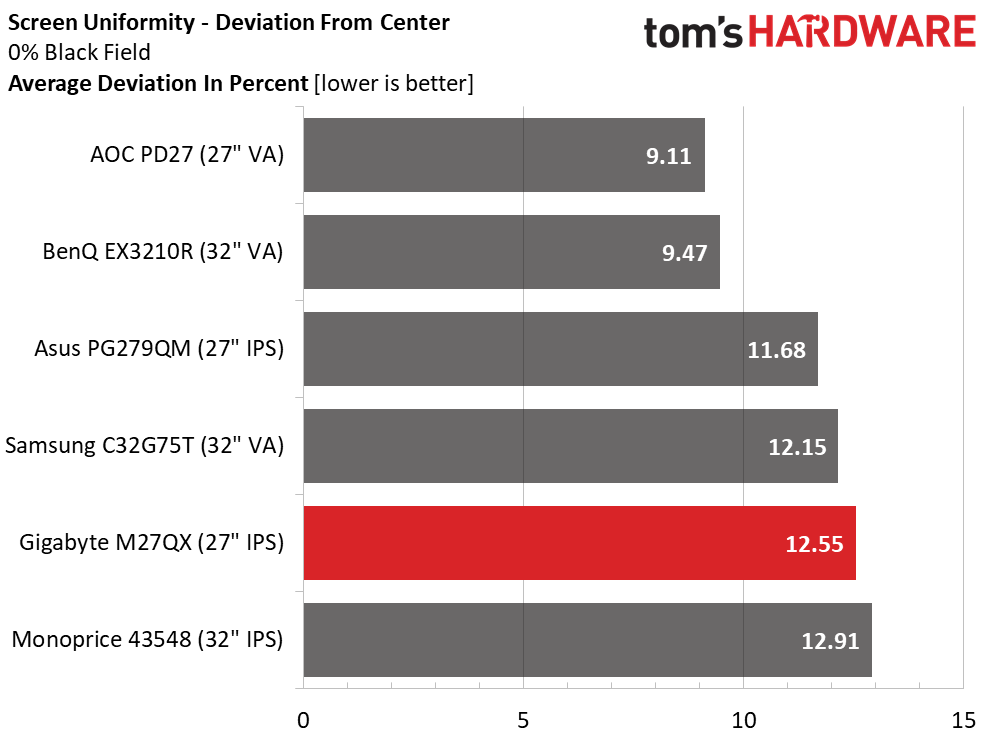Why you can trust Tom's Hardware
To compare the M27Q X’s performance, I had to go back in time a bit to find other QHD/240 Hz monitors. I’ve included Samsung’s 32-inch Odyssey G7, AOC’s PD27 and Asus’ PG279QM. At 165 Hz is BenQ’s EX3210R and Monoprice’s 43548. The comparison panels are a mix of IPS and VA technology.
Pixel Response and Input Lag
Click here to read up on our pixel response and input lag testing procedures.


240 Hz will get you either a four- or five-millisecond response time. That’s fast enough that if you keep the frame rate over 200, overdrive and Adaptive-Sync are barely necessary. The M27Q X scores in the faster category and since it can run its blur reduction along with AS and overdrive, it’s nearly impossible to make it blur during fast camera pans or when objects move quickly across the screen. Only a 360 Hz monitor is smoother.
For total control lag, the M27Q X scores in the top percentile of all gaming monitors. A 360 Hz display might shave off a millisecond or two, but the difference is miniscule. Since both cost about the same, the 240 Hz panel with greater resolution sounds like a winner. The Gigabyte is a great example of the genre.
Viewing Angles

The M27Q X has excellent off-axis image quality with no apparent light reduction at 45 degrees to the sides. A slight green/red shift can be seen in the photos but in colorful content, this will be hard to spot. The top view is a bit murky with a blue tint and a 40% reduction in brightness.
Screen Uniformity
To learn how we measure screen uniformity, click here.

My M27Q X sample had a slight glow at the bottom of the screen. It was visible in a full black field pattern (0% brightness) but disappeared at levels above 10%. It was not apparent in actual content, and detail rendering was not affected.
Get Tom's Hardware's best news and in-depth reviews, straight to your inbox.
Current page: Response, Input Lag, Viewing Angles and Uniformity
Prev Page Features and Specifications Next Page Brightness and Contrast
Christian Eberle is a Contributing Editor for Tom's Hardware US. He's a veteran reviewer of A/V equipment, specializing in monitors. Christian began his obsession with tech when he built his first PC in 1991, a 286 running DOS 3.0 at a blazing 12MHz. In 2006, he undertook training from the Imaging Science Foundation in video calibration and testing and thus started a passion for precise imaging that persists to this day. He is also a professional musician with a degree from the New England Conservatory as a classical bassoonist which he used to good effect as a performer with the West Point Army Band from 1987 to 2013. He enjoys watching movies and listening to high-end audio in his custom-built home theater and can be seen riding trails near his home on a race-ready ICE VTX recumbent trike. Christian enjoys the endless summer in Florida where he lives with his wife and Chihuahua and plays with orchestras around the state.